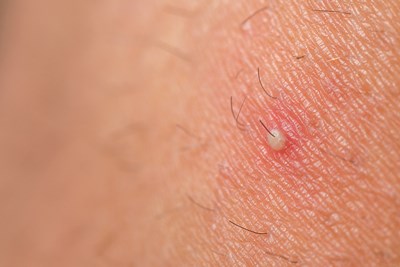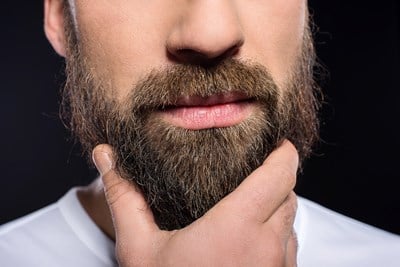Hairs that have curled around and grown back into the skin instead of rising up from it are called ingrown hairs. They are also sometimes referred to as razor bumps. Ingrown hairs occur most often in people who have curly hair, and they are most commonly found on the face and neck in men, and on the armpit, bikini area, and legs in women.
Ingrown Hair Medication
Ingrown hairs are fairly common and usually don’t require treatment since they will go away on their own if you stop shaving, tweezing, and waxing until your symptoms dissipate. However, if you have chronic ingrown hairs or if you have an ingrown hair that becomes infected, you may require medical treatment. Medications that are commonly prescribed for ingrown hairs include:
- Retinoids: If the problem that is causing your ingrown hairs has to do with a buildup of dead skin cells, then you might need a medication that will help remove dead skin cells. Topical retinoids work well for exfoliating your skin and clearing dead cells from your pores to prevent hairs from being trapped and growing sideways. Tretinoin is a popular retinoid cream that will also help to reduce the darkening and thickening that can occur with skin that is prone to getting ingrown hairs.
- Steroids: Steroid creams are also commonly prescribed to treat ingrown hairs since they can help to reduce the inflammation that occurs.
- Antibiotics: If you develop a mild infection from scratching the area of the ingrown hair, you may need an antibiotic ointment to clear up the infection. Oral antibiotics may be needed for more serious infections.
Ingrown Hair Home Remedies
There are certain things you can do to release ingrown hairs on your own as well. Picking at the ingrown hair with your fingernail or digging in your skin with tweezers can cause more irritation and may lead to infection. However, if you are able to see the embedded hair in your skin, there are more sanitary and effective ways to remove the ingrown hair before it becomes infected. Wash the affected area with a washcloth or a soft-bristled toothbrush using circular motions for several minutes. Then, sanitize the area using alcohol and use a sterile needle to insert into the hair loop and gently lift the embedded hair tip from your skin.
There are other home remedies that are said to help relieve some of the symptoms of ingrown hairs, such as itching and irritation. These include:
- Sugar: Sugar works as a natural exfoliant to remove dead skin cells and encourage the ingrown hair to come out of the skin.
- Baking soda: Baking soda can help to soothe your irritated skin because of its natural anti-inflammatory properties. It also can help to relieve itching and reduce redness.
- Tea tree oil: Applying tea tree oil to the affected area can help to heal the skin and prevent infection since it has antibacterial, antiseptic, and anti-inflammatory properties.
- Aspirin: Aspirin contains salicylic acid, which can help to scrub away dead skin cells and loosen the ingrown hair.



